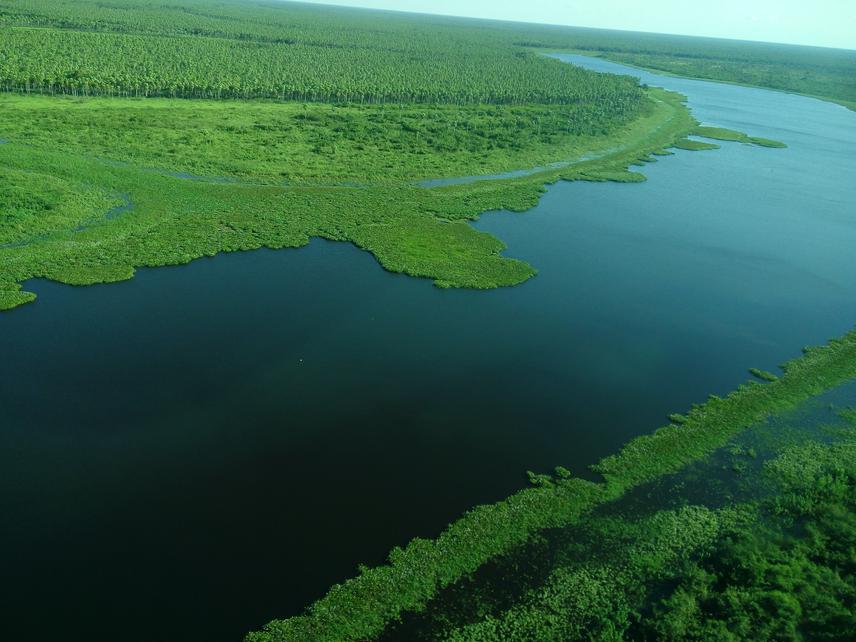Sonia Elsa Rocío Delphin Pérez
The Chaco holds the second largest natural biome in South America, which currently has very high deforestation rates. This region has great biodiversity and provides many ecosystem services. It is home to one of the largest wildcats in the world, the jaguar (Panthera onca), which is under threat. Notwithstanding, the Paraguayan Chaco remains understudied; this project will contribute by identifying and mapping the most relevant ecosystem services, from the stakeholder’s perspective, as well as synergies and tradeoffs between conservation and development. The outcomes will inform future land use planning to achieve conservation, human wellbeing, and economic development in multi-functional landscapes.

Pantanal, the project region.
Paraguay has increased its food supply at the expense of forests, causing changes in precipitation patterns and increases in runoff levels, among others. This conversion mainly occurs in the Chaco region, which holds the second largest natural biome in South America after the Amazon. The current situation represents a complex challenge, as the Chaco has great biodiversity. Furthermore, deforestation also affects indigenous communities which are at risk given their livelihood dependence on forests. Possible deforestation solutions need to include strategies to balance conservation and development, as the goal cannot be to just stop the development of the area. Absent these strategies, important ecosystems will continue to degrade due to mismatches of aims among stakeholders.
The project site is the Municipality of Bahia Negra in the Paraguayan Chaco. Bahia Negra comprises three of the five ecoregions of Paraguay: Pantanal, Cerrado and Dry Chaco. The overall contribution of this project is to inform future land use planning using the ecosystem service approach to achieve conservation, human wellbeing and sustainable economic development in multifunctional landscapes. In the first phase, this project aims to identify and map the most relevant ecosystem services, from the stakeholder’s perspective, as well as synergies and tradeoffs between conservation and development. This work is particularly relevant now as land use planning is still at initial stages in Paraguay, and the lack of a framework and data are key challenges. While the Chaco needs urgent help to ensure ecosystem services conservation, it remains understudied.
This project will use survey techniques and mapping exercises to identify the most relevant ecosystem services for each stakeholder group, ecosystem services hotspots, and synergies and tradeoffs to achieve sustainable development. This research will ensure representation of all relevant stakeholders, with a special focus on methods to reduce power differences, especially for indigenous communities. Community involvement becomes important for the region, as each group is likely to value ecosystem services differently based on its different objectives and interests. With this approach, stakeholders’ interests will be included in the analysis; moreover, areas for conservation and agricultural expansion can be identified to increase possibilities of reducing land-use conflicts, identifying synergies, and reaching a consensus over land use planning. This project will contribute to the protection and conservation of one of the most biodiverse, threatened and fragile ecosystems in the world.